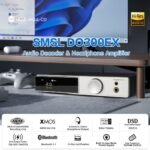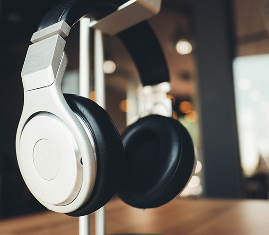When it comes to audio quality, there’s a hidden player that often goes unnoticed: cables and interconnects. These seemingly inconspicuous components have a significant impact on the way we experience sound. Whether you’re a music enthusiast or an average listener, understanding how cables and interconnects affect audio quality can enhance your listening experience. In this article, we’ll explore the fascinating world of lines and interconnects, uncovering their role in delivering high-fidelity sound and how investing in the right ones can bring out the best in your audio setup.
Understanding Audio Cables and Interconnects
Audio cables and interconnects are crucial in transmitting audio signals between various devices, such as amplifiers, receivers, speakers, and headphones. Understanding their definition, types, purpose, and usage is essential to ensure optimal audio quality in your setups.
Definition of Audio Cables
Audio cables are essential to connect audio devices and transmit audio signals. They are designed to carry analog or digital audio signals from the source to the destination, ensuring a smooth and accurate sound reproduction. Audio cables come in various formats, lengths, and connectors, catering to different audio setups and requirements.
Types of Audio Interconnects
Several types of audio interconnects are available, and their selection depends on the specific audio equipment you use. Some common types include RCA cables, XLR cables, 3.5mm auxiliary cables, optical cables (TOSLINK), HDMI cables, and USB cables. Every interconnect serves a distinct purpose and has advantages and disadvantages based on audio quality, compatibility, and ease of use.
Purpose and Usage
The primary purpose of audio cables and interconnects is to establish a seamless connection between audio devices, allowing the smooth transmission of audio signals. They ensure the audio signal is not degraded or distorted during the transfer, enabling accurate and faithful sound reproduction. Audio cables are used in various settings, including home audio systems, professional audio setups, recording studios, theaters, and live performances.
Technical Aspects of Audio Cables and Interconnects
It is crucial to delve into their technical aspects to understand the impact of audio cables and interconnects on audio quality. This includes exploring the materials, signal flow, and cable construction and design.
Cable Materials
Audio cables use various materials, including copper, silver, gold, and alloys. The choice of cable material can significantly affect audio quality. Copper is the most commonly used material due to its conductivity and affordability. Silver and gold, on the other hand, offer better conductivity but come at a higher price. The materials’ quality impacts factors such as signal loss, impedance, noise, and overall audio fidelity.
Signal Flow
The signal flow in audio cables refers to the path traveled by the audio signal through the line from the source to the destination. In an analog signal flow, the audio signal is transmitted as a continuous waveform, whereas in a digital signal flow, the audio signal is converted into binary data. Understanding the signal flow in audio cables helps identify potential areas for signal degradation and optimize the setup for better audio quality.
Cable Construction and Design
The construction and design of audio cables play a critical role in determining their performance. Factors such as cable thickness, shielding, connectors, and overall build quality impact the transmission of audio signals. Well-designed cables with proper shielding and sturdy connectors can minimize signal loss, interference, and noise, enhancing audio fidelity. Additionally, the flexibility and durability of the line are also important factors to consider when choosing audio cables.
Impact of Cable and Interconnect Quality on Audio
The quality of audio cables and interconnects directly impacts the overall audio quality in a setup. Factors contributing to this impact include the material used in the wires, the connectors’ quality, and the cable’s design.
Cable Material and Audio Quality
The material used in audio cables influences various aspects of audio quality. For instance, lower-quality lines with poor conductivity may introduce signal loss, resulting in audio degradation and reduced frequency response. Higher-quality cables, on the other hand, offer better conductivity, translating to improved audio fidelity with more precise and more accurate sound reproduction. However, it’s important to note that the impact of cable material on audio quality is often subjective and may vary depending on individual preferences and specific audio setups.
Quality of Interconnects and Sound Transmission
The quality of interconnects, such as connectors and jacks, is crucial in maintaining the integrity of audio signals during transmission. Poorly constructed connectors or low-quality jacks can introduce signal distortion, impedance mismatches, or even complete audio signal loss. High-quality interconnects, with gold-plated connectors and robust build quality, ensure reliable and uninterrupted sound transmission, leading to improved audio quality with minimal signal degradation.
How Cable Design Influences Audio Fidelity
The design of audio cables plays a significant role in determining the audio fidelity achieved in a setup. Factors such as cable thickness, conductor arrangement, and shielding all contribute to the cable’s overall performance. Thicker lines, for instance, can minimize signal loss and provide better resistance to interference. Similarly, cables with proper shielding protect the audio signal from external electromagnetic interference, producing cleaner and more accurate sound reproduction. Attention to cable design details can enhance audio fidelity and deliver a more immersive listening experience.
Debunking Myths: Do expensive cables always mean better sound?
Regarding audio cables, there is often a debate surrounding the relationship between price and sound quality. It is essential to distinguish between marketing tactics and real, tangible benefits that expensive cables might offer.
Price vs Quality
While it is true that higher-priced cables may feature better build quality and materials, it does not necessarily mean that they automatically produce superior sound quality. The impact of cable price on audio quality can vary depending on several factors, such as the complexity of the audio setup, the specific audio equipment being used, and individual listener preferences. It is essential to consider the balance between price and quality when selecting audio cables rather than relying solely on price to indicate improved performance.
Over-marketed Features
Expensive audio cables are often marketed with various claims, such as better soundstage, enhanced detail retrieval, or deeper bass. However, it is crucial to approach these claims with skepticism and critically assess their relevance to your specific audio needs. Some of these features may have a minimal impact on audio quality or may not be perceivable in everyday listening scenarios. Focusing on the most critical performance characteristics can help you avoid over-marketed features and select cables that enhance your audio experience.









